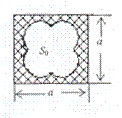请简要说明企业工资奖金调整方案的设计方法。
参考答案:答:由于企业的薪酬制度和方案受企业内、外部相关因素的影响,而这些因素随时都在发生变化,因此,为保证薪酬制度和方案的科学合理性,对企业的工资、奖金方案进行必要的调整在所难免。企业工资奖金调整方案的设计方法如下: (1)根据员工定级、入级规定,根据工作岗位评价结果、能力评价结果或绩效考核结果给员工人级。 (2)按照新的工资奖金方案确定每个员工的岗位工资、能力工资和奖金。 (3)如果出现某员工薪酬等级降低,原来的工资水平高于调整后的工资方案,根据过渡办法中的有关规定,一般维持原有的工资水平,但薪酬等级按调整后的方案确定。 (4)如果出现员工薪酬等级没有降低,但调整后的薪酬水平比原有的低,则应分析原因,以便重新调整方案。 (5)汇集测算中出现的问题,供上级参考,以便对调整方案进行完善。

 ,
, .已知交流电频率是
.已知交流电频率是 ,则打
,则打 点时物体的瞬时速度为_____m/s.如果实验测出的重力加速度值比公认值偏小,可能的原因是_________
点时物体的瞬时速度为_____m/s.如果实验测出的重力加速度值比公认值偏小,可能的原因是_________ 
 :
:


 E.电压表
E.电压表


